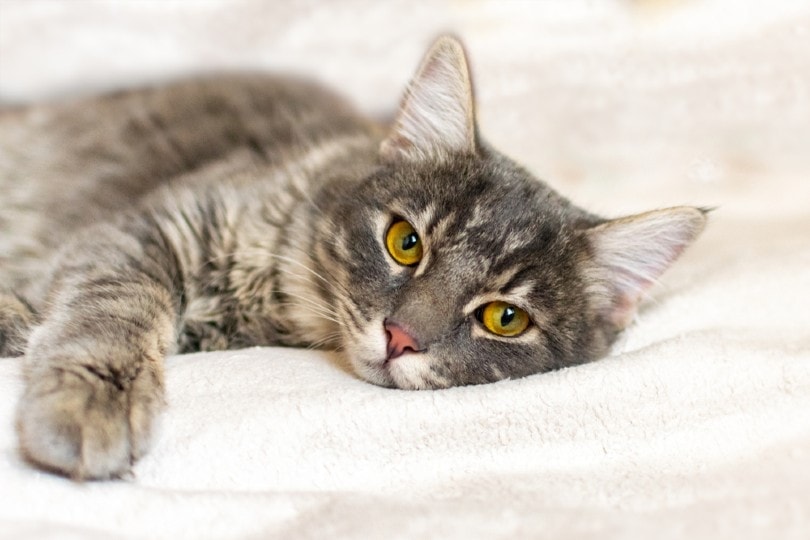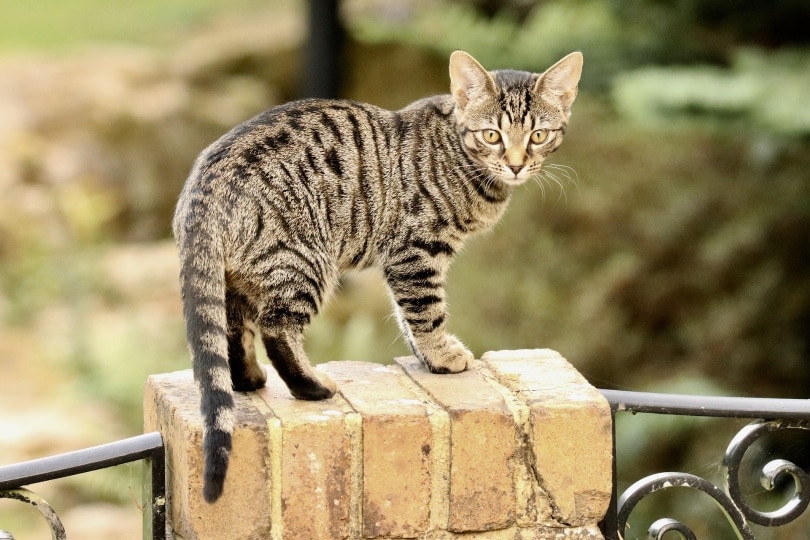How Many Litters Can a Cat Have? Vet-Reviewed Facts & FAQ

Updated on
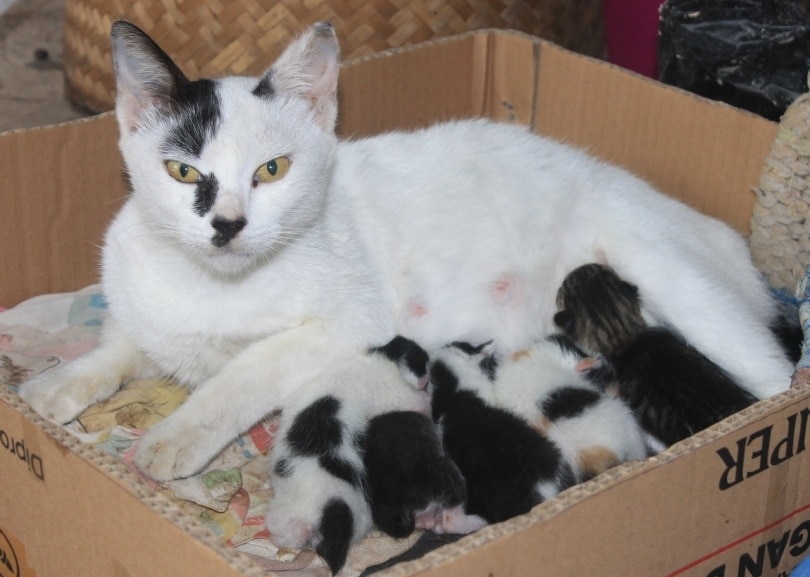
Cats are delightful creatures, but unchecked, they can overbreed, wreaking havoc on local wildlife and struggling to survive as strays. Cats are naturally prolific breeders, quite capable of producing hundreds of kittens in their lifetime under the right circumstances. Although kittens are undoubtedly adorable, there are unfortunately just too many cats in this world.
So, let’s look at the factors that influence how many litters a cat can have.
How Many Litters Can a Cat Have?
In general, a cat can have up to four litters of kittens per year, with an average of four kittens per litter, although litter size can range from one to 12 kittens. Just using the average number means that, left unchecked, a cat can have 15 to 20 kittens per year. Some domestic cats can live to up to 20 years old, and cats can reproduce throughout their entire lives. Consequently, it’s technically possible for one female cat to have up to 100 litters and 400 kittens in her lifetime.
Read on to understand some of the many factors which influence how many kittens a cat will have.
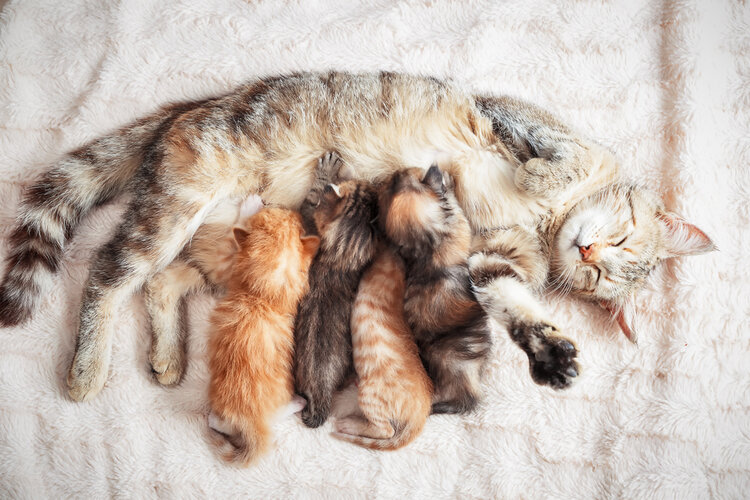
How Soon Can Cats Reproduce?
Kittens can reach sexual maturity relatively quickly. As with humans, the age at which a cat reaches puberty varies and depends on its gender, genetics, and environment. Female cats generally reach reproductive maturity sooner than males, and when kittens are in the presence of other intact or unspayed cats, they frequently reach reproductive maturity even sooner.
Although kittens may be capable of reproducing, beginning from 4 to 6 months old, it doesn’t mean it’s a good idea. Kittens tend not to make attentive mothers, and for this reason, you should hold off on intentionally breeding cats until they are at least 1 year old. To avoid unwanted pregnancies, a kitten can be neutered as soon as it is older than 2 months or weighs more than 2 pounds.
How Often Do Cats Reproduce?
Cats can go into heat any time after they go through puberty, with heat cycles as often as every 2 to 3 weeks. This means that cats can breed a feral cat colony of significant size in just a few years. Therefore, spaying and neutering both pets and strays is crucial for animal welfare and the environment.
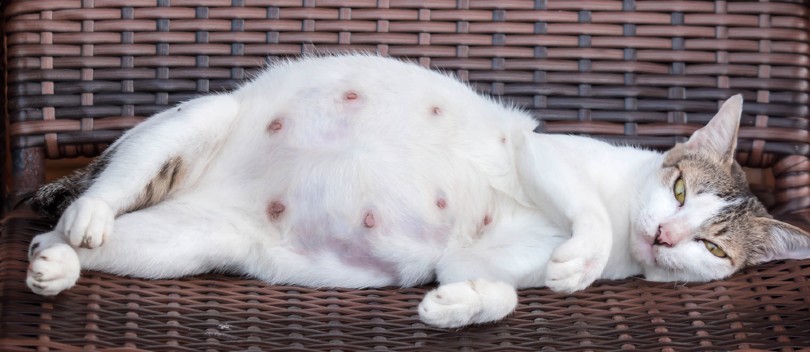
What Is the Average Number of Kittens Per Litter?
Cat litters can range from one to 12 or more kittens. The number of kittens in a litter depends on several factors.
Ovulation in cats is induced by breeding. The egg is not released until breeding has occurred. The more often a female breeds per heat cycle, the more eggs are released. Cats will mate with several suitors if given the opportunity. This means kittens in a litter can have different fathers and look radically different from each other. A female’s litter size is also influenced by her age and breed. Cats in their younger years tend to have smaller litters than experienced adults. After cats are 3 to 4 years old, they tend to have bigger litters until they reach old age and litter size reduces once more.
Nutrition and disease also affect the health of the mother and therefore the number of kittens per litter. Mothers who are well fed and healthy will have more kittens per litter, while mothers who are unwell or struggling will produce smaller litters.
Additionally, disease will limit cat reproduction. Sick cats may experience spontaneous abortions while diseases like feline infectious peritonitis and feline distemper can lead to smaller litter sizes due to the death of born kittens.
How Do You Know When Your Cat Is in Heat?
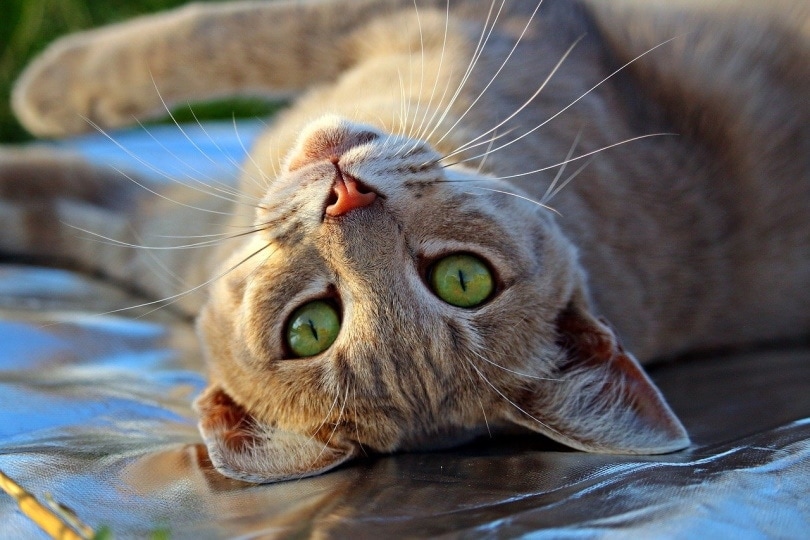
For female cats, oestrus—or the time of being in heat—is not one long season. It is, instead, a series of shorter cycles that may last 2 to 3 weeks each.
There are some telltale signs that your cat is in heat; behaviors which many describe as flirtatious. Your female cat may begin to croon or yowl, demand more attention and affection from you, or even mark your furniture and her territory as she reaches sexual maturity. Her loud mating calls are designed to attract potential suitors from all around.
If you’ve never seen a female cat in heat before, you may think she’s in pain or that these actions indicate something serious, but these are just normal behaviors of a cat looking for a mate.
What Is “Kitten Season”?
The spring and summer months are sometimes called the “kitten season”. This is because the hot weather can bring on oestrus in unspayed female cats. They usually go into heat every 3 weeks in the warmth of summer.
During these months, a female cat may produce up to three litters. This is difficult and stressful for the cat, and without human intervention, many of their kittens could eventually end up in feral or stray cat populations while struggling to survive and reproducing prolifically themselves.
How Can I Prevent My Cat From Mating?
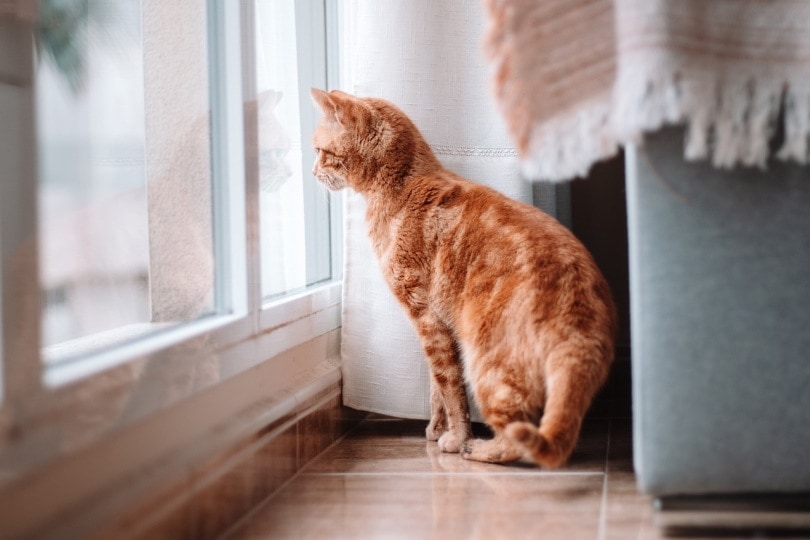
Lock your cat inside if you have missed your window for spaying her. Keeping your unspayed cat indoors away from prowling tomcats is vital. If potential suitors have no access, then no risk exists.
Although some veterinarians may elect to spay a cat or kitten that is already in heat, this can increase the risks associated with the surgery, so it is generally deemed better to wait. As always, consult your veterinarian about the best time to spay your cat.
How Long Does Gestation Last in Cats?
Once they become pregnant, cats have a gestation period of about 2 months. This short pregnancy means a female cat could have as many as five litters a year, although this would be extremely difficult for the cat and hard on its health.
How Do I Know My Cat Is Pregnant?
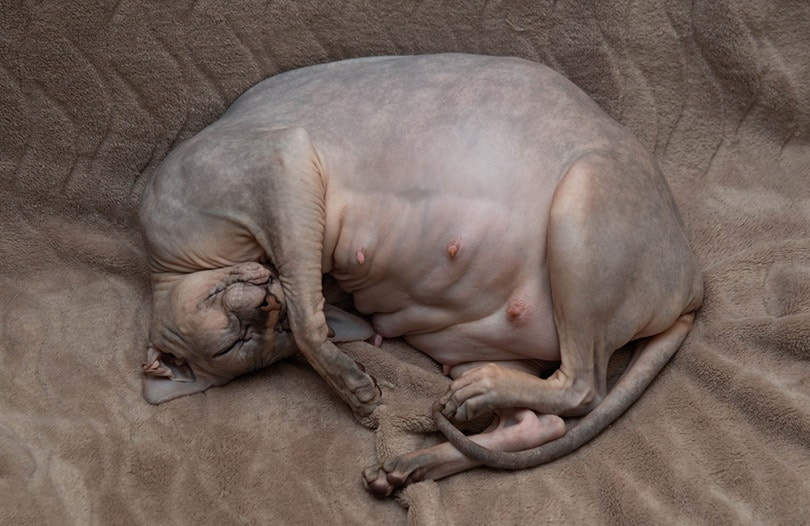
If you haven’t spayed your cat and they are over 4 months old, there’s always a risk she will get pregnant. Even if it has only slipped outside for a few minutes, the possibility exists. Keep an eye out for the signs of pregnancy. The first sign may be that your cat’s nipples will become enlarged or darkened, as her body prepares to begin making milk. She may also have a radically increased appetite and will begin to have a distended belly.
Toward the end of her pregnancy, she may decide to nest by looking for a private place to have her kittens in safety and seclusion. If she goes missing, search out quieter spots around your home. She may be hiding behind furniture or tucked up in a closet or laundry basket.
If you suspect your cat may be pregnant, make an appointment with your vet who can confirm her status with a manual exam or an ultrasound.
When Do Cats Stop Reproducing?
Cat reproduction is quite different from us humans, and there is no such thing as feline menopause. Unlike humans, in general, most animals rarely live beyond the age of reproduction. Even geriatric cats can give birth, although declining fertility as they age decreases their chances of having multiple litters in 1 year. However, cat and kitten health are at risk during later-in-life pregnancy. Age-related conditions such as arthritis can make reproducing difficult. Older cats tend to have smaller litters and fewer kittens, and the stress of motherhood means a lower quality of life for both mother and babies.
Should I Spay or Neuter My Cat?
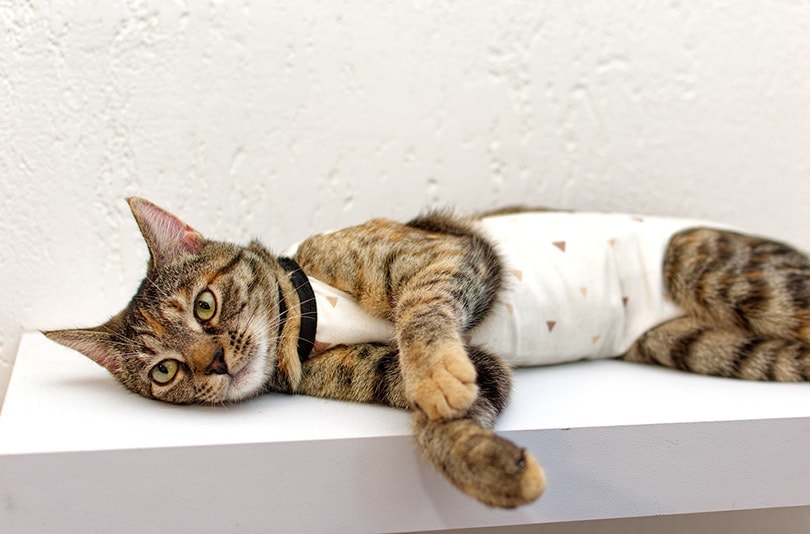
Unless you have a pedigree cat that you plan to breed professionally, you should probably spay or neuter your cat. There are many advantages to spaying and neutering and many disadvantages to unchecked reproduction. On the one hand, there are millions of unwanted cats worldwide living painfully short and precarious lives. On the other hand, spaying and neutering also virtually eliminate a cat’s risk of developing breast, ovarian and uterine cancer in females and prostate and testicular cancers in males.
In addition, without the drive to reproduce, cats wander and fight less and don’t set up screeching and howling when they come into heat. Although you may feel fear the risks of surgery, it’s challenging to keep a motivated in-heat cat locked up inside for a week out of every month for up to 20 years.
Conclusion
If left unchecked, cats are prolific reproducers. The fact that a cat can have up to 20 kittens a year does not mean that it should. Make sure your furry friend is spayed or neutered unless it is a pedigree animal; in which case, practice responsible breeding habits. Every kitten deserves to be loved and doted on, so do your part to prevent the birth of unwanted cats.
See also:
- Cat Spraying vs Peeing: Main Vet-Reviewed Differences
- Female Cat Behavior After Spaying: Vet-Reviewed Facts & FAQ
Featured Image Credit: Jim Polakis, Shutterstock






